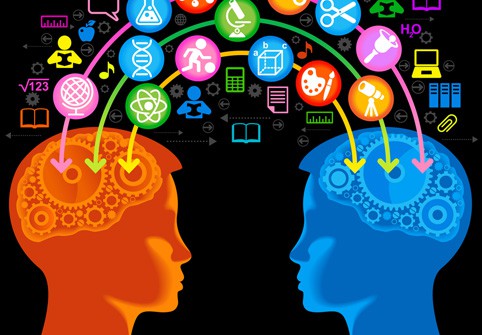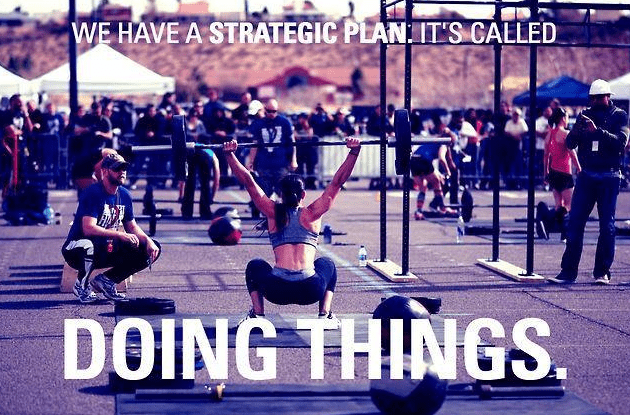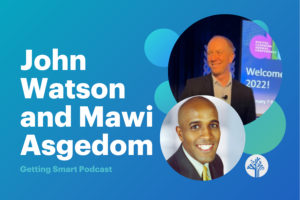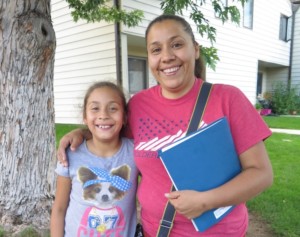Yes-People

Check out Google’s “Zeitgeist 2012: Year in Review,” and as you watch it, think about the spirit . . . the character . . . of the people in it.
[youtube http://www.youtube.com/watch?v=xY_MUB8adEQ]
First of all, isn’t human achievement spectacular?
The achievers in that remarkable video have something in common. They are all “yes” people. Everyone of them. A yes-person is not someone who says “yes” to every request. No, they are not that type of corporate or government yes-man that no one cares for. These yes-people have the natural inclination to think “yes” when presented with an idea, goal, or challenge. They are ready to take on the journey, accept the challenge, and do something. And that should be a capital D and a capital O, more like DO something. They are the opposite of the “no” people. The no-people, when presented with the same challenges, first think of all the barriers and why it is impossible. Their first response is “no.” For a no-person to proceed, they have to be convinced, convinced that there are no surprises, no challenges, nothing that could go wrong, and nothing but green lights all the way from the maintenance guy up to the CEO.
 A lot of things make educators no-people. Budgets, safety, some district regulation that’s not been addressed since 1974. It’s easy to reach for that “no” response. “No” is safe.
A lot of things make educators no-people. Budgets, safety, some district regulation that’s not been addressed since 1974. It’s easy to reach for that “no” response. “No” is safe.
If we want to create and foster a nation of DO-ers, though, we need yes-people. It’s true that yes-people have the most unsuccessful attempts at things in life. There’s no denying that. They also have the most success, the most inventions, the most successful startups, the most daring rescues, the most discoveries. No-people don’t fail a lot. They don’t achieve a lot either.
In education, we’ve made the mistake of equating one attempt at an exam with . . . well, with everything else. We don’t allow for a lot of room to explore, let alone explore with the potential of failure followed by repeated attempts at success. Failure doesn’t have to be an option. For a yes-person, it’s just a step.
Students have so many ideas that never get off the ground because they are being led by teachers who are no-people. Likewise, so many teachers have ideas that never take flight because they are led by leaders who are no-people. “It’s the cost, it’s the time, it’s rules, it’s the lack of rules. What if it doesn’t succeed? It’s not been done before.” And my all time favorite: “If we let your students do that good idea, then we would have to let all students do that good idea.” You have to be a true believer in “no” to think that letting everyone have a chance at something good is bad.
Here’s the biggest rub. The Digital Era has ushered in the Age of Yes. It looks something like this:
Can we get a phone that can access the Internet? Yes.
Can we have a touchscreen on that phone? Yes.
Can I monitor my house while on vacation? Yes.
Can I create a video that millions of people can see? Yes.
Can I publish my own novel? Yes?
Can I download music right to my computer? Yes. (Okay, can I do it legally? Yes.)
Can I have an expert doctor operate on me robotically from thousands of miles away? Yes.
Can my grandparents apply online for a reverse mortgage? Yes.
Can I do my taxes online? Yes.
Can I go to college online? Yes.
*Can I make a Hamlet video at school? No.
At all stages of our life, technology has enabled us with one big YES. No-people in education can turn that upside down for yes-students. Most of our students are yes-people, unless we’ve conditioned them to become no-people. Students for the most part are “Push Button” kids. Media Snackers describes the push-button phenomenon this way:
A young person would push a button to see what it does—an adult would ask what the button does before they pushed it.
It’s easy to grow into a no-person (budgets, safety, age.), but as educators we can’t let that dampen a student’s curiosity and wonder. All of the DO-ing achievement can’t go on outside the school where students have access to the net and all of its wonders. The Internet has made it so much easier for us to re-claim our yes-selves. We just need to flip on that switch and run with it.
Turning Yes into DO-ing
Being a yes-person doesn’t necessarily make us a DO-er, though. Here’s a broken cycle that we can fix: We consume media like never before. 24/7. We read, watch, and listen on a seamless stream of technology. It’s easy to get lulled into the world of consumption. What we need is more producers. Too many of us (teachers) are from an era when production was costly, outlets were few, and gatekeepers were many. That simply doesn’t describe today. Let’s make sure our student content-consumers are aware that they, too, can be producers. And that’s “be” as in right now. No waiting required. Let’s also make sure they know how to use the tools to get them there.
YouTube is one of the biggest beneficiaries of the yes-person Do-er who is the producer. They have taken it up a level with the introduction of a new initiative simply called Space. Right now they are just in L.A. and London, but more are on the way. Big media companies having taken note, as well. While no individual Youtuber can rival the big networks in terms of feature productions, Youtubers do own mobile viewing. As consumers, we’ve decided that short clips are what’s appropriate for our mobile devices. Over four billion hours of video are viewed each month on YouTube. Don’t do the math. It doesn’t make sense, but that’s where we’re at.
Students love telling their stories, and they especially love telling it on film. Yes-people educators are bringing student filmmakers up to speed with projects like Ghetto Film School.
The Toolbox
Let’s put together a toolbox that yes-people educators should have handy. Here’s a start.
1) Discovery – Students need a way to explore their interests and find connections that they didn’t realize existed. Genius ideas often come from connecting two things together in a way that no one imagined before. InstaGrok fosters that. Google’s What Do You Love spans searches across all of their products. Try them both: InstaGrok. Google’s What Do Your Love.
2) Collaboration – Students need to be able to collaborate, brainstorm, and map ideas in their future work environments. Use Google Hangouts for collaboration with Cacoo for mapping ideas.
3) Funding. So much can be done free now, but sometimes you can’t avoid costs. Try these two sources for funding: Donors Choose and Kickstarter. Check out some of these school projects funded on Kickstarter:
Buena High didn’t need to outsource it’s giant mural painting. Kickstarted funded the artists in the school’s classroom.
McCallum High need funding for students to build interactive outdoor seating structures.
East Hollywood High needed money for their feature film. They got it.
4) Video Creation – This is simply a must. Video creation will be a new basic office skill. Wow views with an Animoto video. Dive deep with free online video editing tools, like those found at Youtube’s Creator Corner.
5) Blog Creation: For assignments that require or students who need a digital print resource, try Blogger and Edublogs. Tumblr is popular with arty students and content creators. For more on student blogging, check out http://blogging.edtecworks.com/
6) Image Editing – This is another basic office skill. Try Pixlr and Creative Kit in Google +.
7) Rewards – For some quick and easy badges, try ClassBadges. It can be a first step in gamifying your classroom.
8) Publishing – For the authors in your room, tune them in to Lulu.
9) Portfolio – Find a way for students to showcase their work. Digication and Behance both have solutions. Digication is great. Behance is a little advanced, but something that students can keep once they graduate. Students can keep a Digication account for $20 a year after they graduate.
Up to a year ago, I would have included social media on this list, but nearly all of the tools listed here include social media features. That’s another testament to how far social media has come.
The title of the Google video at the beginning was “Zeitgeist 2012: Year in Review.” Zeitgeist is a German word that means “spirit of the times.” Let your zeitgeist be “I am a yes-person!”






0 Comments
Leave a Comment
Your email address will not be published. All fields are required.